The WordPress community developed thanks in part to a love of the platform’s amazing customizability. And though a high level of customizability is generally considered as a positive, that doesn’t mean that it can’t be an overwhelming notion. For those new to WordPress, one of the most pressing questions has to do with the difference between using themes for WordPress, free vs paid.
Here’s the thing:
For many just getting started with WordPress, the thought process around using WordPress free vs paid (at least as far as themes are concerned) probably revolves around the fact that if there’s a free option that works perfectly, why would anyone shell out money for a premium option? This mentality falls in line with general startup advice suggesting that people wanting to start a new blog or website keep costs low so as not to have excuses getting in the way of launch.
Certainly, this advice makes sense, but it doesn’t necessarily reflect strategic long-term thinking. There are many advantages associated with investing in premium WordPress themes. Certainly, there wouldn’t be a market for them if there wasn’t already a lot of people willing to purchase and use them.
Many questions still remain:
- Do you really need a premium theme to have a beautiful website?
- Does a premium theme guarantee that your website will run faster?
- What are the disadvantages of sticking with a free theme?
- Free/premium WordPress themes? Which one is right for any given project?
Luckily, you’ll find the answers to all of these questions and more below. Before we take a take a look at the key differences between free and paid themes, remember that you can use our theme detector tool to identify the theme of any WordPress site – this is very useful if you come across a site you like and want to find out what theme it uses!
Free WordPress Themes
It’s quite easy to find free WordPress themes – you can take a look at our guide on the best WordPress themes here – after installing a new instance of WordPress on your web host of choice. You’ll find options in the WordPress official theme directory by navigating to Appearance > Themes > Add New Theme from the WordPress dashboard (here’s our guide on how to install a WordPress theme).
Note that this certainly isn’t the only place to find free WordPress themes—there are also thousands of other free theme options available on the internet (more on that later).

That said, the real advantage of choosing a theme from the WordPress theme directory is that they are officially approved, meaning that any theme submitted to the official theme directory is subject to strict review.
The theme review process starts with an automated WordPress plugin that scrutinizes the theme against WordPress’s strict coding standards. If it is approved, the submitted theme will be manually reviewed by WordPress theme developers. It’s only after these two steps have been passed with flying colors that a theme becomes available to the public on the official theme directory.
Free WordPress Themes: Pros of Use
Why would someone choose to use a free WordPress theme? The reasons are numerous:
- Free is always a good thing for new website owners, and ideal for those constantly experimenting or itching for a change every now and then. WordPress premium themes require payment, and many of these don’t come cheap! In fact, according to CodeinWP, the average price for a premium theme is $57.54. Some theme sellers don’t accept returns, so if you don’t like the theme you bought, or it isn’t compatible with your must-have plugins, you may be stuck with something you can’t use.
- At least for the options listed on the official theme directory, free themes are officially approved through a multi-step process on WordPress.
- Free themes tend to have a fairly minimalist design because they don’t have a lot of premium features and widgets. For example, GroundWP lists the minimal design of its theme as a feature, highlighting that this simplifies customization to suit any website’s specific needs. Moreover, if your website does not employ the use of a lot of plugins, this could make for a speedy WordPress website (which will improve your SEO).
- Free themes are usually built with beginners in mind, and as such, are simple and easy to use. Before approving a theme, WordPress developers make sure that the themes in the theme library can be used by a beginner as part of their testing process. These free themes are also usually compatible with most WordPress plugins.
- Besides the official WordPress theme directory, we recommend our curated list of high-quality free WordPress themes.
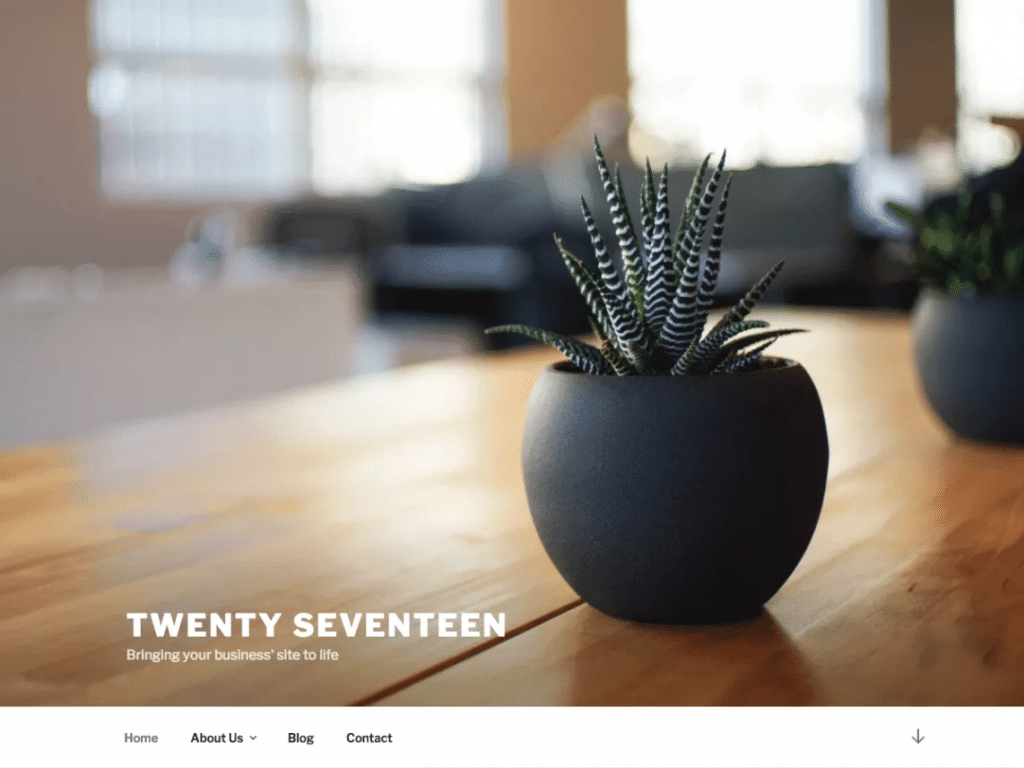
Twenty Twenty is the latest in a series of free themes offered directly from the developers behind WordPress. Check out this developer’s introduction to the Twenty Twenty theme.
Free WordPress Themes: Cons
Since there’s no such thing as a free lunch, there are quite a few holdups to consider when it comes to using a free WordPress theme:
- A free theme has limited features and no extra functionality, which many larger and more professional websites require.
- Some free themes have over 1 million downloads! Free themes are not unique when compared with premium themes. Since anyone can download them without the barrier to entry of payment, many similar types of websites will make use of the same theme. Since there aren’t as many customization options available on free themes as there are on premium themes, the differences will be negligible, and users will probably start to pick up on these themes’ repetitive features (suggested reading: How to Customize Your WordPress Theme).
- A fair portion of the themes on the WordPress repository site are rarely updated, which might render them incompatible with frequent version updates of the WordPress CMS.
- Free themes offer no support if there is an issue. There are so many contributors to free themes that WordPress cannot track who the theme author or developer is. You have to rely on third-party help (WordPress forum, Facebook groups, LinkedIn groups, paying a web developer), and there’s no guarantee that you’ll get a quick reply (or any) if you’re not paying someone to help you.
- Free themes not found on the official theme depository might be poorly coded (buggy), which could also make your site vulnerable to security issues.
- A word to the wise: not all free themes are created equal (there are different WordPress licenses) so when you download a theme, it’s best to know what you can legally do with it.
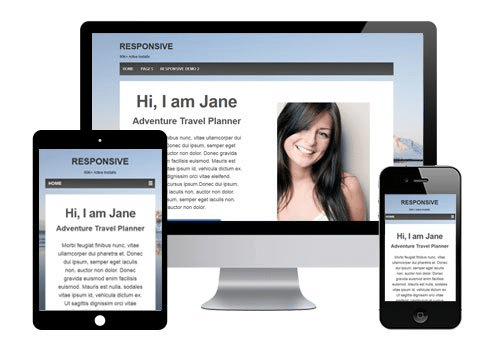
CyberChimps is a business theme with over 1 million downloads and 80,000+ active installs.
Why Companies Create Free WordPress Themes
WordPress themes are certainly not easy to make, so why do some people offer them for free?
One situation might be that the free themes are for an individual or company’s work portfolio. Others create free themes to improve their craft and to improve their experience with the WordPress platform.
Others create free WordPress themes to get their name out, to advertise something, or to increase brand exposure. Free themes incorporate the use of links in the footer, connecting the theme’s instance to the original developer’s website. Everyone that downloads the theme and uses it exposes their audience to this link, driving more traffic to the developer’s website (and creating backlinks for SEO).
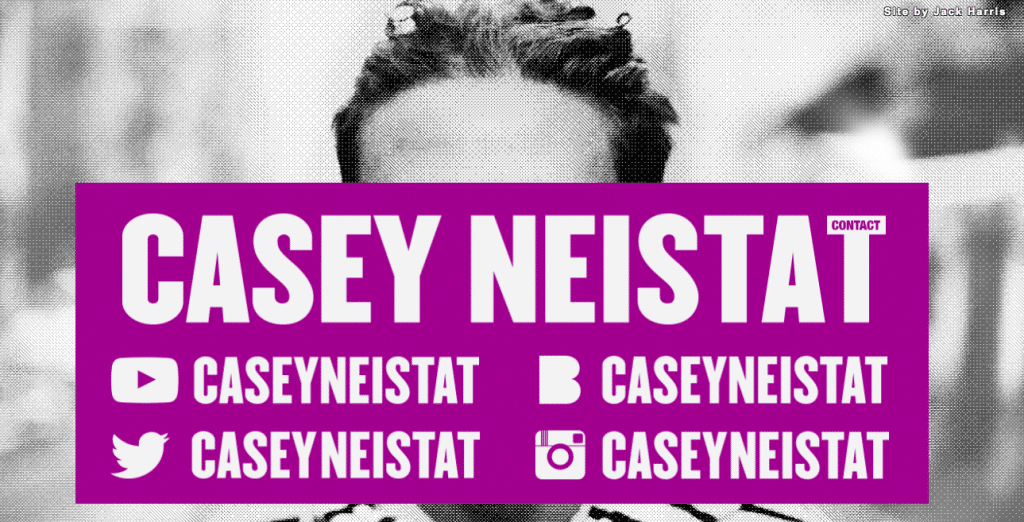
Though not technically in the footer (the common web design heuristic), developer Jack Harris shares in a part of Case Neistat’s fame by creating an association between the Youtuber and himself.
Another reason people develop WordPress themes for free is the possibility of upselling. A WordPress theme freemium model involves a developer offering a free theme so that the user can try it out, but offers somewhat limited functionality so that people that need more have to purchase the premium version of the same theme. It’s actually a great risk-free way to sell the premium version of the theme because it provides users with the ability to test it out before fully committing to a purchase.
Though you never want to believe the worst in people, another reason that people develop free themes is so that they can use them as an opportunity to get their malicious codes onto other people’s websites.
How to Locate Your Perfect High-Functioning Free WordPress Theme
Before a free theme enters the WordPress repository, it has been comprehensively checked for a number of issues, namely:
- Accessibility
- Code
- Core functionality and features
- Presentation and functionality
- Documentation
- Language
- Licensing
- Naming
- Options and Settings
- Plugins
- Screenshots
- Privacy
- Selling, credits, and links
- Stylesheets and scripts
- Templates
For the free themes you find outside of the WordPress repository, there’s a greater risk for malicious code than if you were to just buy a premium theme. Here are some ways to check if your free theme may be too good to be true:
- Perform a Google search. Type in a query for the website or theme name to see if there are any negative twitterings about it online.
- Scan the theme files for viruses. VirusTotal is a free online tool you can use for free.
- If you have the patience and time for it, you can manually go through theme files. The most common locations to find spammy backlinks on a theme are the css and footer.php file.
- Check theme authenticity. There are several WordPress plugins you can use to do this, such as Exploit Scanner and Theme Check.
- If you’ve already uploaded the theme to your WordPress site, do an overall scan of the website using Google Safe Browsing. Add your domain name to the end of this URL: https://transparencyreport.google.com/safe-browsing/search?url=) or make use of Sucuri, which is a security company that offers a free site scanner.
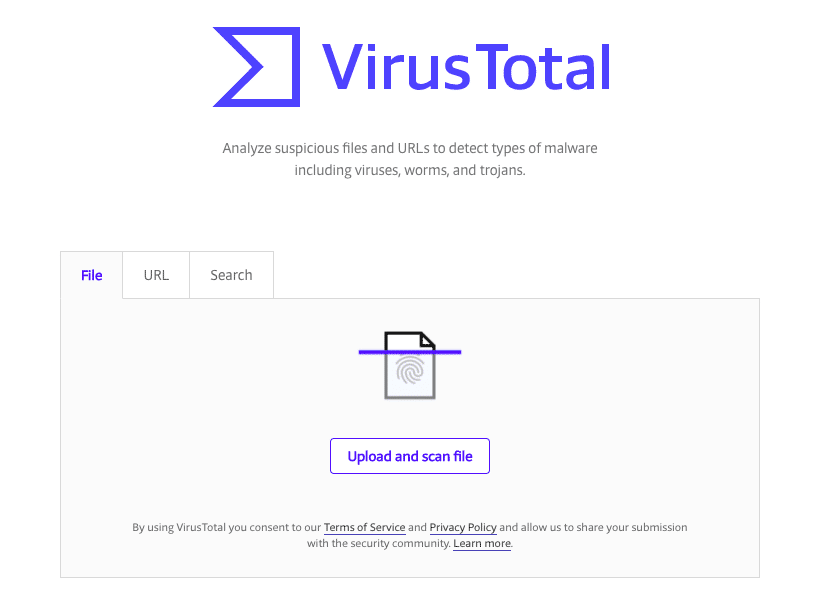
VirusTool is just one tool you can employ to scan a free WordPress theme for issues.
When to Use a Free WordPress Theme versus a Premium WordPress Theme
Theme selection is about more than just picking an option that “looks good”; it’s also about choosing something that works well for your content and website goals.
Put simply, use a free WordPress theme if you:
- Want to start a personal blog
- Don’t care if your site looks the same as most
- Are just after basic functionality
- Can get by with little support (ideal if you’re using it primarily for simple blogging functionality)
Alternatively, use a premium WordPress theme if you:
- Are going to use WordPress for a business website (or are thinking of expanding your WordPress website to include complicated functionality like ecommerce in the future)
- Want your website to look unique
- Want your website to be capable of supporting many different features
- Don’t know how to fix issues and need a dedicated support team
Many of the premium themes and plugins are available online for free. But we highly recommend you not to use products from these sources. Here are the top reasons: Why You Should Stop Using Nulled WordPress Plugins and Themes
To help make the decision easier, you must first define what your website is about. If you’re looking for specific functionality a la photography website, food blog, or ecommerce site, you’ll need to choose a WordPress theme that will work for this given purchase. Know that the more advanced your website gets in terms of desired functionality, the more complex it will be to run and manage. Using a free WordPress theme will make this hard to do well.
What You Get with a Premium WordPress Theme
Just as with premium hosting, you should think of premium WordPress themes in terms of an investment for your business. After all, there’s a reason why premium themes have premium prices—they also offer premium features!
Think of a premium WordPress theme like a good boyfriend/girlfriend/partner.
When you find the perfect option, you not only have access to a fully functional theme—you also get support, frequent updates, more freedom (in terms of customization options), and security (less threat of viruses and third parties). Best of all, a premium WordPress theme stands out as being much more unique than a free WordPress theme could ever be.
Here are some defining elements to look for in a premium WordPress theme:
- Standards-compliant: Up-to-date with the latest versions of WordPress, PHP, CSS, and HTML
- Responsive: A responsive WordPress site is becoming more of a necessity because Google counts mobile-responsiveness as an important ranking factor
- Compatible across different browsers
- Customizable
- Works well with other plugins
Would you like to know what are the best selling themes? Take a look at this detailed post by WPNewsify where they asked the 28 leading companies about the most popular themes.
Top 19 Best Sources for Premium Themes
Not sure where to start your search for the perfect premium WordPress theme? The following theme providers are all Kinsta-approved:
- MyThemeShop
- CyberChimps Themes
- Elegant Themes
- Codeless Themes
- MH Themes
- Artbees Themes
- Proteus Themes
- Prothemedesign
- Porto Themes
- ThemeForest marketplace
- Pixelgrade
- WPZOOM
- Themeisle
- Meridianthemes
- Macho Themes
- Premiumcoding
- Anariel Design
- TemplateMonster
- SKT Themes

WordPress Free vs Paid Themes
A free or premium WordPress theme has its advantages and disadvantages, but choosing which one to install ultimately depends on your website’s needs and the website owner’s budget and aesthetic preferences. Know that it’s completely OK to start with a free WordPress theme and upgrade down the road as the need arises. It’s your world, we’re just living in it.
What questions do you still have about WordPress free vs paid themes? Tweet @Kinsta, and we’ll help you make a decision!
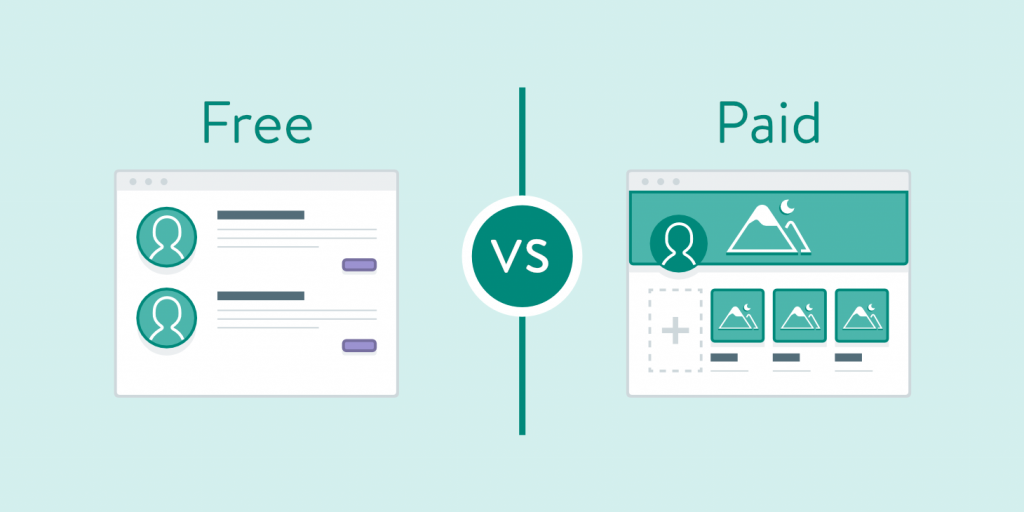


Great point of view and article, one advantage of the premium themes is (according to the theme) the premium plugins that are bundled with the theme. For example, one of my themes offers 4 premium plugins, if the user purchase each plugin separately to use in a free theme the final price will be bigger than the premium theme price.
Bundling premium plugins in the theme is considered a bad practice and should be avoided if possible.
I guess it all boils down to where you’re coming from. If we were to judge by ThemeForest standards, people seem to appreciate a “good value” bundle. It seems to be a common practice to bundle at least 2 *ahem* popular plugins into your themes.
I believe that, as long as those plugins aren’t necessary for the theme to actually work, they’re fine being bundled with the theme. As long as they’re optional, the user can decide to turn them off.
It just looks to me that this is something that market’s actually demanding for, rather than a bad/good practice.
I want to create a website and I am just wondering if I should start with a free theme. Since I am not really an expert at wordpress so I guess buying a theme in the start will be a bad idea. What do you suggest?
Hey Faseeha!
That’s a great question. If you’re just starting out we recommend going with a free theme until you get the feel for using WordPress and how it works.
Thanks for such an informative writing.
Great article!
I have one question as a beginner…For example I want to create a website and I buy some premium theme with premium plugins, when I finish creating that site I want to sell it to someone, does that someone person need to buy that premium theme too when we migrate the site to his hosting service, I hope You understand what I want to ask…!?
Best regards!
Niko
Hey! Here’s Oana from Pixelgrade. I just wanted to thank you for featuring us. It means a lot. Hopefully, we’ll see more WordPress authors interested in great design which is meant to solve real digital problems. Hope for the best!🤞
You are welcome! Keep up the good job.
If only I’m not lazy, I’m going to replace the template with one of them. Thanks for this wonderful collection! I was looking for responsive themes and now I got these wonderful and beautiful. Thanks a lot, these are working fine.
Are there any free fully customizable themes? I am hacking and hacking themes and I am just thinking wordpress just isn’t for me everyone tries to sell premium shit on this all day in order to customize the way you want. Everything feels so limited if I don’t want to pay… Maybe I am missing something though… can I make my own theme? Do I have to pay to be able to? Not for me indeed
Hi Brad, did you try the official Twenty-twenty theme? https://kinsta.com/blog/twenty-twenty-theme/
Hi, thanks for sharing. I was wondering if there is any free WordPress theme that you would recommend if I would like to build a video based website which allows other users to upload their own video?
Hi Eva, with Vodi theme you can create even a video sharing site like Youtube.
Very well explained. This article is very helpful for any beginners like me. Thanks for sharing this.
Hey that’s a good article. Yes people do go for free themes as it keeps the cost to minimal.
Hello, and thank you for sharing. If I wanted to establish a video-based website that allows other people to add their own video, I was hoping you could recommend a free WordPress theme.